
Fitzgerald Marine Reserve is a protected marine and intertidal park located at Moss Beach, California, about 40 minutes south of San Francisco, just north of Half Moon bay. It’s a spectacular place to visit at low tide, for some of the finest, most accessible tide pools in the region.
And as you’ll see, there’s definitely a lot to look at.
The most important thing about planning your visit is to consult a tide table, and to visit at low tide. Fortunately, the “consult a tide table” part is easy nowadays: just click this link. If you can plan it in advance, visit on a day when there’s a very low tide (negative, if possible) that occurs during daylight hours. The lower the tide, the more you’ll see.
When you get to Fitzgerald Marine Reserve, just a few blocks drive from Highway 1 in Moss Beach, there’s a little parking lot, a set of outdoor restrooms, and a little visitor’s shack with the day’s tides posted. (There is no admission or parking fee.)


From the parking lot, there’s a short path down to the tide pools.
There’s a little bit of sand on the beach, and past that, the rocky tide pools. There is also a buffet of intertidal creatures for hungry sea birds. On this visit, we saw a great blue heron.
When you first venture out onto the rocks, you’re in the “splash zone,” full of smooth weather-worn rocks that are only submerged during the few deepest tides of the month. There’s not much life visible here except for sparse seaweed and a handful of unhappy snails and barnacles.
A little further out, we’re in the mid-tide zone (or a little bit beyond), where the ground is covered by dense algal clusters, and is only exposed by (most) low tides.
It is here that we start to see the real tide pools— little pockets of water trapped by the receding tide. Every one of these is teeming with life. Here, you can see a giant green anemone, surrounded by turban snails and hermit crabs. Tiny crabs and tiny rock fish called sculpins are almost always hiding amongst them as well.
In another pool (a little closer to shore), we can see an apparent cluster of black turban snails. It’s only an apparent cluster of snails because in any group of them, fully half seem to actually be hermit crabs that recycle the snail shells— ready to retract their legs and fall to the bottom of the pool when they see your shadow, only to sprout legs again a few moments later.
Further yet out, we come across giant mats of california mussels, occasionally blending into little tide pools.
If you look more closely at the mussels, you’ll find a number of other interesting things hiding there. The jagged white shapes are goose barnacles, and you may also notice other (smaller) types of barnacles and a few finger limpets in this photo.
Also amongst the matts of mussels, you can find one of their predators:
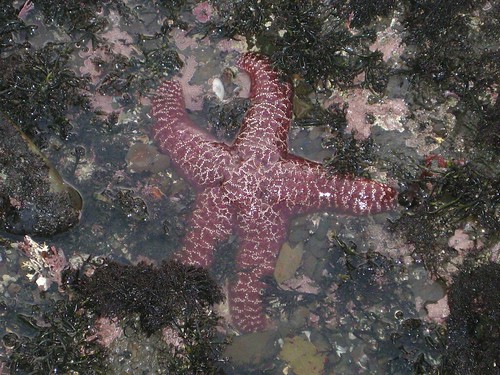
This is an ochre star, which is the most common sea star found here. They thrive on shellfish including mussels and barnacles, and are found in colors ranging from orange to purple.
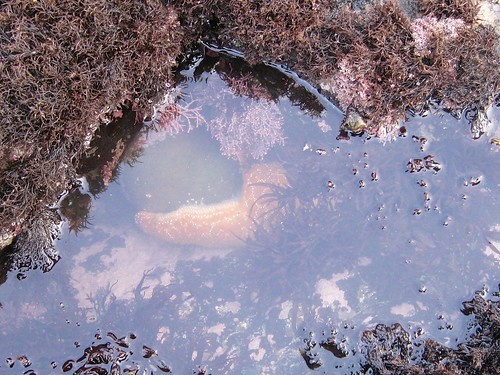
When you catch one underwater, you can see sometimes its tube feet guiding it along; these are active, moving creatures.
Here are two more ochre stars: one in the seaweed, one in the sand.
The ochre stars in these two photos are almost perfectly camouflaged. A sea star that avoids being seen by the sea gulls will live to hunt another day.
Speaking of camouflage, check out this little rock crab: Not only does it look like it’s made of stone, but it has also found a shelf of exactly its shape and size to rest upon.
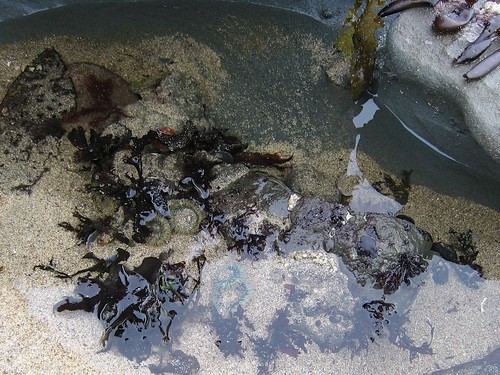
These aggregating sea anemones also blend in, hidden mostly under a layer of sand.
A solitary sea anemone with red arms; only saw a couple like these.
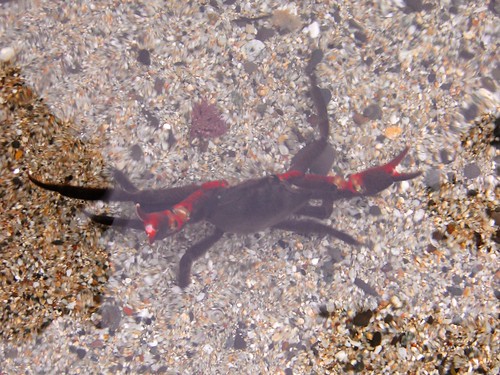
A kelp crab. Most tide pool creatures are happy to hide.
This fellow, on the other hand, came right towards us, claws up, ready for a fight to the death.
A mossy chiton. Chitons are segmented marine mollusks; this type has fuzzy “hair” around its edges. We saw quite a few of these, some remarkably well camouflaged.
A lined chiton. Slightly less common and more elegant than the mossy type.

Here’s something a little more unusual: A sea lemon, possibly peltodoris nobilis.
And finally, the most exciting thing about going to visit the tide pools: you see different things every time that you visit. We haven’t seen any purple sea urchins at Fitzgerald, but we did see a few empty shells. Maybe next time.
And even if not, there are many things worse than spending the day at the beach.
Edited Sept. 7, 2019: replaced dead link with link to active tide tables.




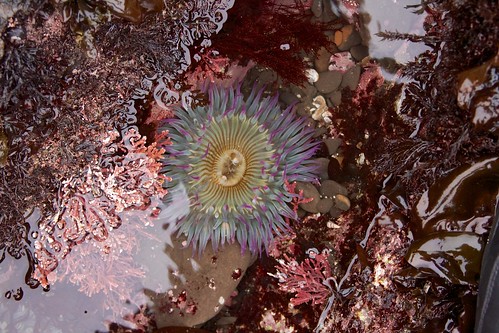
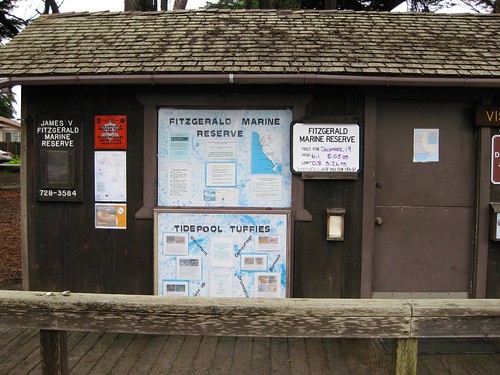
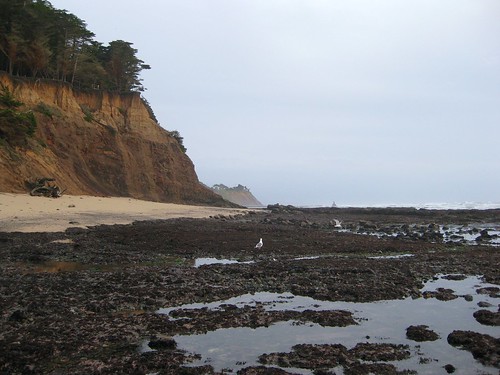
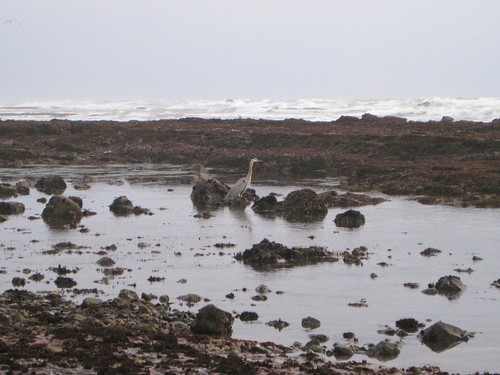
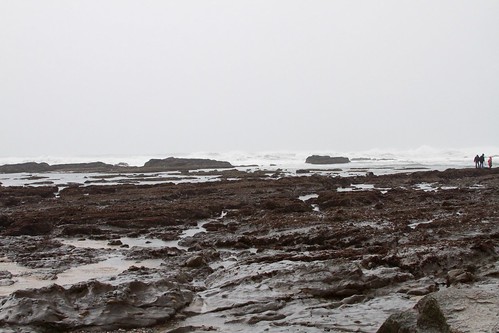

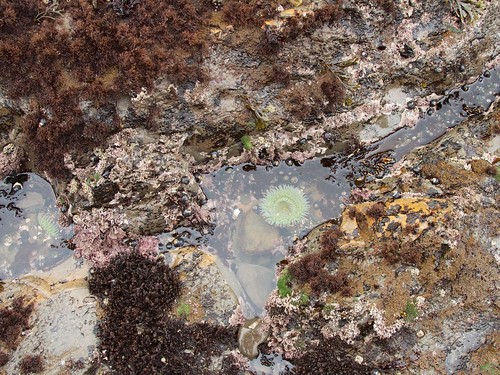
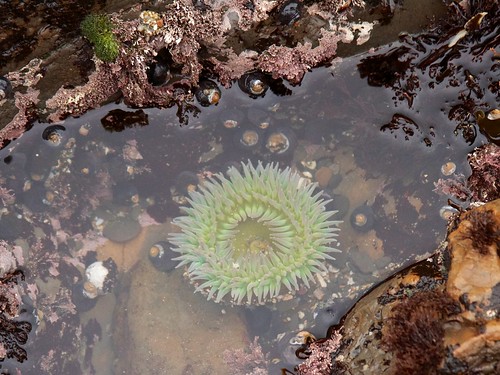
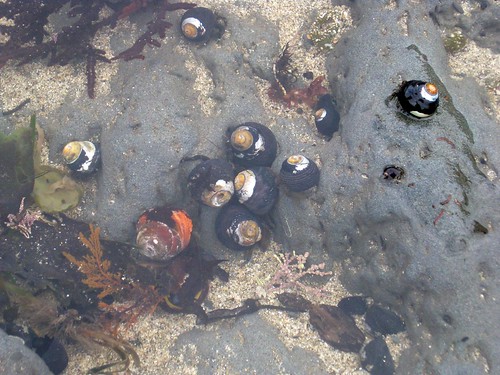
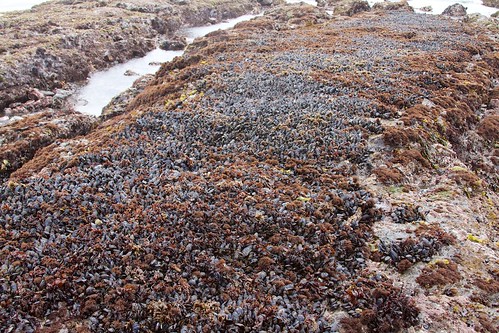
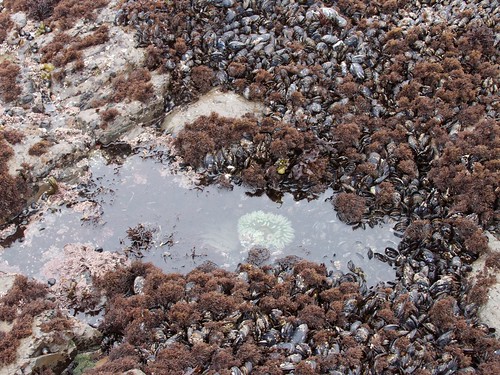
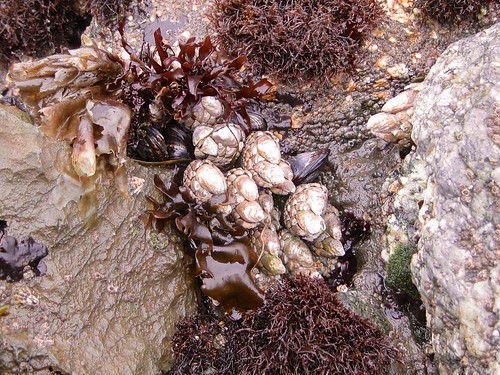
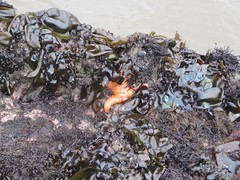
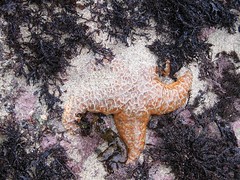

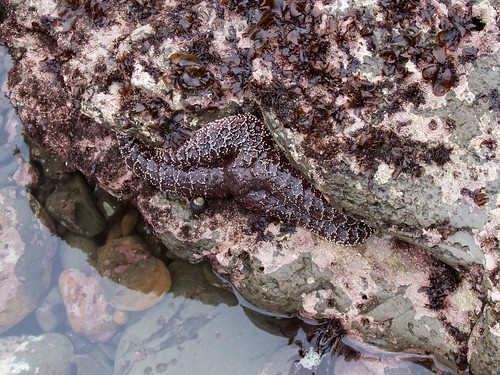
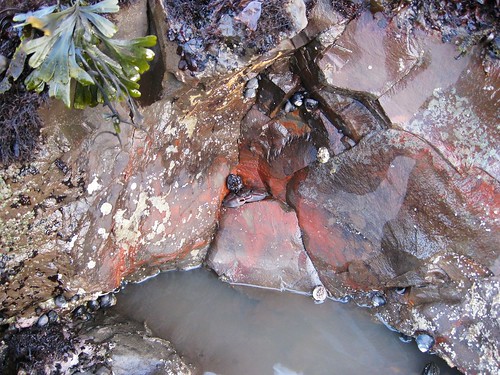
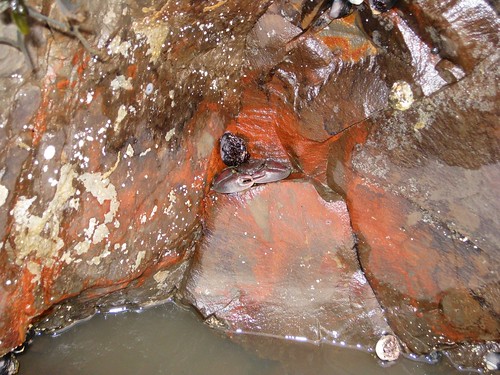
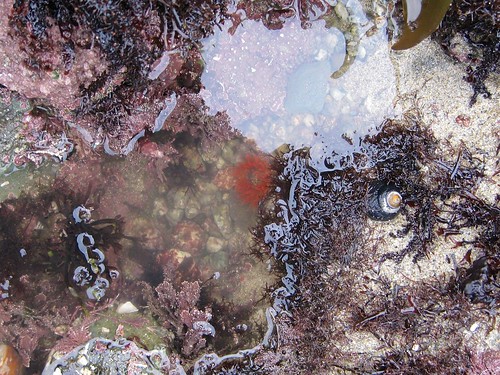
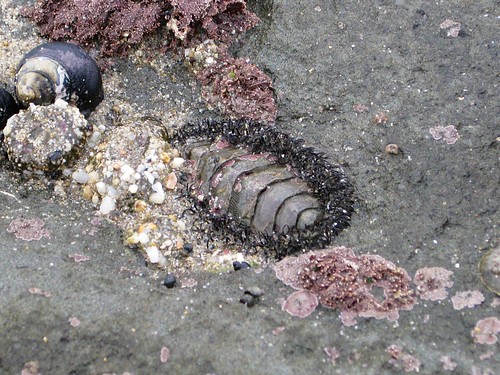
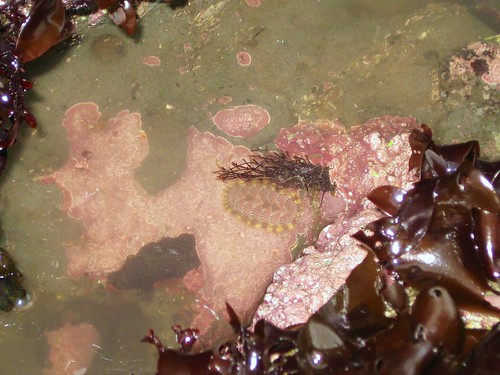
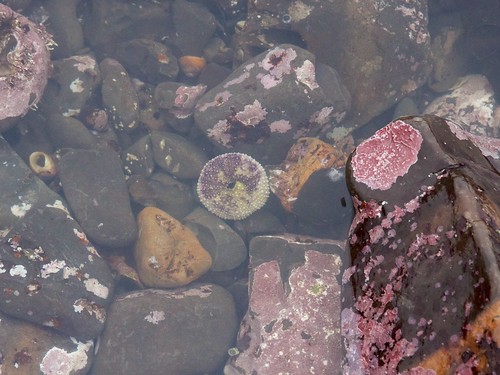
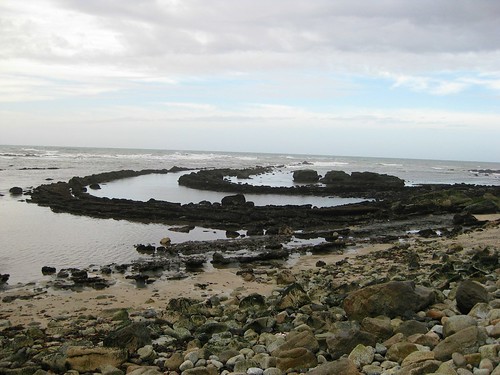
There are abundant purple sea urchins at Fitzgerald, mainly concentrated in an area fairly far out, and well south of the entrance. It’s easy to miss this spot, if you’re not looking for it. (I just tried to look it up on Google Maps, but the satellite seems to have gone over at high tide; I seem to recall the concentration is in the area off Cypress Point.)